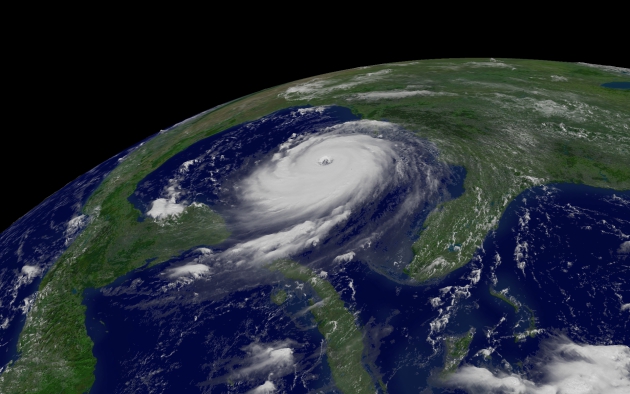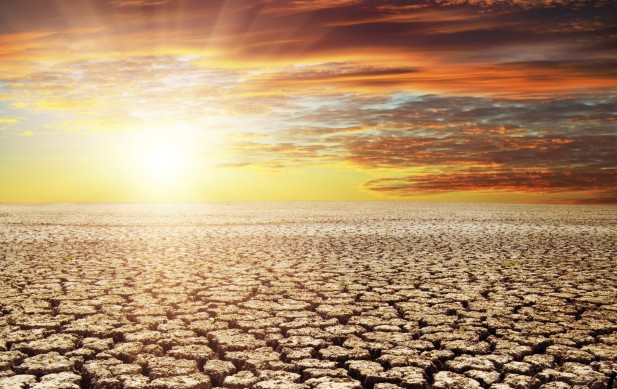August 19, 2007: Record 24-hour maximum rainfall of 15.10 inches set in Hokah, MN (Houston county). This 24-hour total contributed to the record monthly maximum rainfall of 23.86 inches that was set in Hokah during August of 2007.
August 19, 1980: Strong winds at Belle Plaine severely damage five planes.
Wednesday Rain Event Was the Biggest Since 2012
When in doubt, which is much of the time, predict rain. Odds are you’ll be right. It’s raining harder and longer than it did for your grandparents. The Minnesota Climate Office counts 4 separate 1-in-1,000 year flood events in Minnesota since 2000. I’m no statistician, but that one leaves me scratching my head.
Wednesday’s statewide soaker may have been the biggest rain event since the Duluth flood of June, 2012. Over 8″ at Redwood Falls; the MN DNR estimates 60 percent of the state picked up 1-2″ of rain. Unusual for any month – especially odd for August, when precipitation is convective or showery.
Expect enough sunshine for 80F today; mid-80s on Sunday with an isolated thunderhead sprouting. Sadly, U.S. and European models still bring a smudge of showers & T-storms into Minnesota Monday.
The odds of actually seeing the eclipse (here) are roughly 1 in 3. Skies will darken at midday as the moon passes in front of the sun. Even if it’s visible resist the urge to stare at the sun.
Expect a sunny, comfortable start to the fair, but more rain arrives next weekend. My apologies.
* Map above shows predicted percentage of the sky that will be covered in clouds at 1 PM CDT Monday, close to peak eclipse time for much of the central USA. Twin Cities? 66% cloud covered.
Biggest Rain Event for Minnesota Since Duluth Flood of 2012. The Minnesota DNR has timely perspective on Wednesday’s flooding rains and tornadoes: “…This was the most widespread and intense rainfall event of the year (to date) in Minnesota, with 1-2 inch totals covering approximately 50,000 square miles, or about 60% of the state. Totals of greater than three inches were concentrated in a multi-county area in western and central Minnesota, generally centered on the Minnesota River. The largest official rainfall report came from Redwood Falls, where a volunteer with the National Weather Service’s cooperative observer program reported 8.12 inches in 24 hours. Two “unofficial” automated gauges in the area actually reported more rain, but the 8.12 inches recorded at Redwood Falls is the largest official 24-hour precipitation total in Minnesota since June 20th, 2012, when Two Harbors reported 10.45 inches during the worst flood in that area’s recorded history. Fortunately, the tornadoes were short-lived and relatively weak. Of the seven confirmed by the National Weather Service in Chanhassen, six were rated at EF-0. The lone EF-1 tornado damaged a farmstead near the Nicollet-Sibley county border, in the township of New Sweden…”
8th Tornado on Wednesday. Late Friday the local National Weather Service sent out information about an 8th tornado in the Prior Lake area, an EF-0 strength twister that caused minor damage.

Velocity Signature. Here is the radial velocity couplet that showed up on the (RadarScope) weather app Wednesday evening near Prior Lake. A Tornado Warning was issued for this rotating cell.
August 16 Severe Storm Summary. The Twin Cities office of the National Weather Service has a good summary (with new mapping) that pinpoints where 8 tornadoes touched down on Wednesday evening.
What a Rainy Week! Dr. Mark Seeley is master of the understatement in this week’s edition of Minnesota WeatherTalk: “Over the past week many parts of the state have reported rainfalls totaling over 5 inches. Thunderstorms over August 13-14 brought record-setting rainfall to some Minnesota communities, including: 3.75 inches at Montevideo; 3.00 inches at Alexandria; 2.20 inches at Windom; 2.04 inches at Long Prairie; and 1.38 inches at Grand Portage. Then even heavier rains came over August 16-17 this week, along with a few tornadoes in Nicollet, Sibley, and Blue Earth Counties, all very short-lived. The rainfall in these thunderstorms was record-setting at many locations, even more so than the rains earlier in the week. Some of the new record amounts were: 8.12 inches at Redwood Falls (many flooded basements); 4.11 inches at Willmar; 3.98 inches at Vesta; 3.66 inches at Marshall; 3.57 inches at Montevideo; 3.18 inches at Melrose; 2.88 inches at Pokegama Dam; 2.73 inches at Lake City; 2.67 inches at Pipestone…”
Historic Rainfall and Flooding of August 18-20, 2007. It was just 10 years ago Minnesota set a new 24-hour rainfall record; details via NOAA: “Rainfall and flooding of historic proportions struck parts of the Upper Mississippi River Valley on Saturday night, August 18th, continuing through Sunday, August 19th. Rainfall in excess of 15 inches fell in some areas, with the main swath of heaviest rain centered along a line from Claremont and Rochester, Minnesota to La Crosse, Viroqua and Muscoda, Wisconsin. A 24-hour rainfall record was set for the state of Minnesota near Hokah, MN (Houston Co.) with 15.10 inches, while unofficial readings may have exceeded 17″. There were numerous mud slides, roads washed out, and flash flooding that killed 7 people. The community of Rushford, MN was flooded by Rush Creek and infrastructure remained damaged for months. Damage costs likely exceeded $200 Million.”

Dry Weekend For Much of USA. With the exception of showers and T-showers over northern New England most of America will experience a fairly dry Saturday and Sunday. By Monday showers and T-storms flare up across the Midwest and Upper Mississippi Valley – possibly complicating eclipse-watching. NAM guidance: NOAA and Tropicaltidbits.com.
Sweat Optional. Not a bad outlook for the kick-off of the Minnesota State Fair next Thursday. ECMWF guidance shows upper 70s to near 80F the first 9 days of the fair with relatively comfortable humidity levels. Tomorrow may be the warmest day in sight the next 2 weeks. Twin Cities data: WeatherBell.
Deadly South Asia Floods Affect 16 Million People. BBC News has an update: “More than 16 million people have now been affected by seasonal flooding across a swath of South Asia, say aid officials. The floods in Nepal, Bangladesh and India are thought to have killed about 500 people and are expected to worsen. The International Federation of Red Cross and Red Crescent Societies (IFRC) says it is becoming one of the worst regional humanitarian crises in years. There are growing concerns about food shortages and disease…”
Photo credit: “About 11 million people in India have been hit by flooding.”
Past Weather in the Twin Cities for the August 21, 2017 Eclipse. Here’s a clip from the Minnesota DNR and State Climatology Office: “…And what should we expect from the August 21st, 2017 eclipse? We should see a noticeable loss of daylight, even if it’s cloudy, because up to 86% of the available sunlight will be blocked by the moon. Partial eclipses of the past have produced dusk-like sunlight levels, even during the middle of the day. The 2017 eclipse will occur at a time when temperatures normally would be climbing by a degree or two per hour, but we should expect temperatures to lose ground for an hour or so, possibly affecting our ability to reach what would have been the high temperature otherwise. Although we will not be in the “path of totality,” observant Minnesotans will have no problem recognizing the partial eclipse...”
A New Tornado Alley is Forming in America’s Southeast. Meteorologists are noticing the trends, highlighted by Bloomberg: “…In terms of the number of twisters, Tornado Alley is still dominant. But in recent decades, the bulk of the destruction inflicted by these storms has shifted to the southeast U.S., a swath of states from Louisiana to Georgia meteorologists have dubbed Dixie Alley. Since 1997, on average, tornadoes in Dixie Alley have caused more than $600 million in property damage annually (accounting for inflation) and killed more than 40 people a year, compared with $470 million in damage and 13 deaths a year in Tornado Alley. And that’s despite almost 3,000 more twisters touching down in Tornado Alley during that time…Weather conditions aren’t the only factor when considering the destruction in Dixie Alley. A higher proportion of people there live in mobile homes than do people in Tornado Alley. These structures are particularly vulnerable during a storm and contribute to the increasing share of fatalities in Dixie Alley. The Southeast is also more populated than the Great Plains states in Tornado Alley. Georgia is among the fastest-growing states in the U.S., with many transplants settling in and around Atlanta, which has grown 41 percent since 2000. The Birmingham, Alabama, metro area has grown 25 percent, and Nashville, Tennessee, is up 52 percent during that time, too…”

Lessons From the Storm: Effects of Extreme Weather Linger More Among Children and Older Adults. A story at New Orlean’s NOLA.com was an eye-opener: “…The elderly and children are among the most vulnerable populations to extreme weather events. That’s in part because they often do not have the ability to mobilize quickly or on their own, and they’re at a greater risk physiologically and psychologically. These trends were noticeable in the aftermath of Hurricane Katrina. Consider these key findings from several studies:
- Seventy-four percent of the deaths related to Hurricane Katrina were among those age 60 and older, and 50 percent of these were among people over age 75, according to a 2006 study.
- In the year after Hurricane Katrina, displaced students in Louisiana public schools, on average, performed worse in all subjects and grades compared with other students. In addition, displaced students experienced a variety of problems related to attendance, academic performance, behavior and mental health, according to a 2010 report...”
We Saved the Ozone. Here’s How We Can Save Everything Else. GOOD describes international efforts to ban harmful chemicals. The climate challenge is much more daunting, since it requires a reduction in the fossil fuels that still largely power the world: “…In the ’80s, climate scientists realized CFCs and HCFCs – heat-catching chemicals most commonly used as refrigerator coolants – were tearing holes in our planet’s atmosphere. The Montreal Protocol drew upon this evidence to enact laws that would have global repercussions, but it wasn’t until this latest study the rest of us learned about the benefits the United States has since incurred. Head researcher and study writer Lei Hu used the National Oceanic Atmospheric Administration’s atmospheric monitoring network to determine that eliminating these pollutants had the same effect as cutting carbon dioxide emissions by 170 million tons each year from 2008 to 2014. Hu and her team further estimated that maintaining the Montreal Protocol could help the U.S. cut an additional 500 million tons of CO2 by 2025 – that’s about a quarter of the emissions we need to cut in order to fulfill the Paris climate agreement, Gizmodo reports...”

Hyundai Unveils New Fuel Cell SUV With Longer Travel Range. A viable alternative to electrical vehicles? Here’s a clip from The Washington Post: “Hyundai Motor said Thursday it plans to launch early next year a second-generation hydrogen fuel cell vehicle that will travel more than 580 kilometers (360 miles) between fill-ups under Korean standards. If delivered as promised, the new fuel cell vehicle will travel 40 percent farther than its first generation fuel cell SUV, the Tucson ix FCEV, launched in 2013. Under European standards, Hyundai said the new vehicle can drive 800 kilometers (498 miles). Fuel cell cars, emission-free like pure electric cars, can be refueled in two to three minutes unlike electric vehicles that can take several hours to fully recharge. But the dearth of hydrogen fueling stations is an obstacle for mass adoption…”
Photo credit: “Hyundai Motors’ new hydrogen fuel cell vehicle is displayed during a media preview in Seoul, South Korea, Thursday, Aug. 17, 2017. Hyundai Motor says its new hydrogen fuel cell vehicle will travel more than 580 kilometers (360 miles) between fill-ups.” (Lee Jin-man/Associated Press).

On The Climb to Renewable Energy, Solar and Wind Prices Tumble. Things are moving in the right direction – we just need to move faster. Here’s a clip from GreenBiz: “…At a time when so little is getting done in Washington — and what little movement there has been, has been in the wrong direction — it’s heartening to see how much has been accomplished, primarily as the result of efforts by other actors. In its report “Renewables on the Rise” (PDF), the group states, “Clean energy is sweeping across America and is poised for further dramatic growth in the years ahead.” Here are some highlights:
- America produced almost eight times as much electricity from sun and wind as we did in 2007, and those two sources combined to produce 10 percent of the nation’s total for the first time in March.
- At the same time, the country is using nearly 10 percent less energy per capita than a decade ago. Nearly all of that decline was in fossil fuels: In 2007, fossil fuel consumption (PDF) was 85.927 quads, compared to 2016 when it was 78.569.
- Breaking it down further, solar produced 43 times more power than 10 years ago, while wind produced seven times as much...”
Image credit: Shutterstock.
Is There a Return on Investment With Wind and Solar? All energy sources receive subsidies, one question: what is the health-related ROI of clean energy for consumers? Here’s an excerpt from Quartz: “One of the biggest criticisms of the renewable-energy industry is that it has been propped up by government subsidies. There is no doubt that without government help, it would have been much harder for the nascent technology to mature. But what’s more important is whether there has been a decent return on taxpayers’ investment. A new analysis in Nature Energy gives renewable-energy subsidies the thumbs-up. Dev Millstein of Lawerence Berkeley National Laboratory and his colleagues find that the fossil fuels not burnt because of wind and solar energy helped avoid between 3,000 and 12,7000 premature deaths in the US between 2007 and 2015. Fossil fuels produce large amounts of pollutants like carbon dioxide, sulfur dioxide, nitrogen oxides, and particulate matter, which are responsible for ill-health and negative climate effects…”
Photo credit: “Glittering future.” (Reuters/Carlos Barria)
From “Selfies” to “Bothies”. I’m an Apple fanboy, but I have to admit this is very cool, and may take citizen journalism to the next level. Here are a couple excerpts from The Guardian: “Nokia has launched the most important new handset in its attempts to revitalise the once world-beating brand for the modern smartphone era dominated by Samsung, Apple and China’s Huawei….The company is pushing what it calls the “bothie” as the next evolution of the selfie, using Nokia’s Dual Sight technology to fire up both the rear and front-facing cameras at the same time, shooting video or photos of a subject and the smartphone operator simultaneously, which can be shared live directly to Facebook or YouTube…”
Image credit: “The ‘bothie’ Dual Sight function on the new Nokia 8.” Photograph: John Nguyen/Press Association.
HBO’s “Game of Thrones” Is Blessing and Curse for Croatia. Here are a couple of excerpts from Quartz: “Like the Targaryen’s dragons, Game of Thrones tourism has grown into a beast that’s become increasingly hard to control—just ask the people of Dubrovnik. The insanely popular franchise is turbo boosting Croatia’s economy overall through tourism. But now the country’s Southern city is having to make more cutbacks to tourist numbers in a bid to prevent the overcrowding, which has become more and more problematic in recent years. Dubrovnik mayor, Mato Franković, plans to cap the number of visitors scaling the city’s Medieval walls at 4,000 a day—just half of the number suggested by Unesco, which granted the Old City World Heritage Site status in 1979...”
Image credit: “Dubrovnik as King’s Landing.” HBO.
Closest Confederate Monuments or Statues To Your Zip Code? Quartz has the answer: “Is a statue of Robert E. Lee lurking in your neighborhood? Statues, memorials and even schools are named in honor of the General who fought and failed to win independence in the US Civil War. According to the Southern Poverty Law Center, there are more than 1,500 symbols of the Confederacy in public spaces across America, Lee included…”
What Kind of Father Lets His Son Play Football? This story at GQ.com struck a nerve, because I did let my two sons play football. That was before all the stories came out about CTE and brain injuries, not just NFL and college players but high school leagues. I really struggle with this because, like so many others, I LOVE football. But when it comes to your own kids is the risk too great? “There’s no longer any avoiding the question. We all know now just how dangerous the game can be. So, do you let your kid risk it all—his health, his brain—just because he wants to play? One dad explains the excruciating call he made. am on the phone with the writer Malcolm Gladwell, the number one voice in American culture advocating for The End of Football. We’ve just dissected the game’s risks and liabilities and the dangers of repeated head trauma when I ask him this: “What would you say to me if I told you I was gonna let my son play football?” A pause. “Well, I’d never tell any parent what they should or shouldn’t do…,” Malcolm politely, Canadianly, stammered. “It’s okay,” I say, “really. Just tell me what you think.” “I’d say I think you’re crazy…”
Photo credit: Cait Oppermann.
Constant Anxiety Won’t Save the World. Not according to a story at The Atlantic: “…The anxious mind and the worried mind can manage to bring back topics over and over again,” he says. “It is possible that people can really spend quite an amount of time every day worrying about world events.” Studies show that anxiety can interfere with decision-making and working memory. “Excessive worry can lead to fatigue, lack of concentration, and muscle tightness,” Woodruff says. “The interesting thing is the fatigue and lack of concentration are the opposite of what people are trying to promote when they’re advocating for vigilance.” If that stress and worry becomes chronic, Lertzman adds, “people get overwhelmed. They burn out and short-circuit and turn their backs on the very issues that they care most deeply about...”
Use Your Seat to Get Ahead at Work. Here’s an interesting article at The Wall Street Journal: “Want to boost your performance at work? Pick out a colleague who is really good in an area where you want to improve—and move your desk next to him or her. Proximity to high achievers can lift people’s performance in various jobs, via inspiration, peer pressure or new learning, a growing body of research shows. The findings offer a silver lining to anyone annoyed at the current fad of flexible office-seating arrangements; employees can use them to their advantage. Simply sitting next to a high achiever can improve someone’s performance by 3% to 16%, according to a two-year Northwestern University study of 2,452 help-desk and other client-service workers at a technology company...”
People Age Better If They Have a Purpose In Life. TIME.com explains: “Having a purpose in life may help people maintain their function and independence as they age, according to a new study published in JAMA Psychiatry. People in the study who reported having goals and a sense of meaning were less likely to have weak grip strength and slow walking speeds: two signs of declining physical ability and risk factors for disability. Purposeful living has already been linked to other aspects of wellbeing, like a longer life, lower risk of disease, better sleep and healthier behaviors. But this study is among the first to examine its connection with physical functioning. That’s an important measure, say the authors, especially as the number of senior citizens in the U.S. grows rapidly. Almost 1 in 3 Americans ages 65 and older says they have difficulty walking three city blocks, according to the CDC…”
Photo credit: Bethan Mooney for TIME.
Coke vs. Pepsi. Brand Choices Put Strains on Relationships. Really? I read this article at Indy100 and did a double-take: “…The researchers found that partners who had low power in their relationships (who couldn’t shape their partner’s behaviour) usually submit to the others’ preferred brands. Former Fuqua PhD student Danielle Brick, now of the University of New Hampshire, said:
If you are lower in relationship power and have different brand preferences than your partner, you’re probably going to find yourself stuck with your partner’s favourite brands, over and over again.
This could lead to a death-by-a-thousand-cuts feeling.
Most couples won’t break up over brand incompatibility, but it leads to the low power partner becoming less and less happy.
The researchers used brand preferences in soda, coffee, beer, chocolate, and cars to study individuals and couples over the course of two years. They found the results aligned with findings about relationship power and happiness, and although not seen as important conventionally, could weigh down a relationship. Brick said..”
The Eclipse Conspiracy. What, pray tell, does THIS remind you of? Something just doesn’t add up. Those astronomers are only in it for the big, fat government grants! There may just be two sides to this story. Follow the money, argues James Hamblin, tongue planted firmly in cheek, over at The Atlantic: “…Meanwhile the scientists tell us we can’t look at it without special glasses because “looking directly at the sun is unsafe.” That is, of course, unless we wear glasses that are on a list issued by these very same scientists. Meanwhile, corporations like Amazon are profiting from the sale of these eclipse glasses. Is anyone asking how many of these astronomers also, conveniently, belong to Amazon Prime? Let’s follow the money a little further. Hotels along the “path of totality”—a region drawn up by Obama-era NASA scientists—have been sold out for months. Some of those hotels are owned and operated by large multinational corporations. Where else do these hotels have locations? You guessed it: Washington, D.C...”
Image credit: Yannis Behrakis / Reuters.

TODAY: Partly sunny and mild. Winds: SW 5-10. High: near 80
SATURDAY NIGHT: Partly cloudy and mild. Low: 64
SUNDAY: Warm sun, isolated T-storm possible. Winds: SW 7-12. High: 85
MONDAY: Eclipse dud? More numerous T-storms. Winds: SE 5-10. Wake-up: 68. High: 79
TUESDAY: Damp start, then getting sunnier. Winds: NW 7-12. Wake-up: 64. High: 80
WEDNESDAY: Sunny with lower humidity levels. Winds: NW 5-10. Wake-up: 58. High: 76
THURSDAY: Comfortable sun for the State Fair. Winds: SE 5-10. Wake-up: 57. High: 77
FRIDAY: Partly sunny, stronger breeze kicks in. Winds: SE 10-15. Wake-up: 60. High: 78
Climate Stories…

Release Climate Report, and Follow the Science. Here’s an excerpt of an Op-Ed from the Editorial Board at San Antonio’s Express-News: “…Given the circumstances, then, it’s perfectly reasonable to be concerned about political manipulation or suppression. It’s also possible the report could quietly be released and then ignored. All of these outcomes would further undermine America’s global standing and harm future generations who will have to live with our failure to take these warnings seriously. These reports have value. The public and decision makers should read them and draw their own conclusions. By and large, the science points in a clear direction. The National Oceanic and Atmospheric Administration, for example, recently released its annual “State of the Climate” report, confirming that 2016 was the warmest year on record. That report doesn’t specifically link human activity to climate change, but it offers no shortage of troubling observations. Greenhouse gas levels were the highest ever recorded. Same with global surface temperatures and sea levels. Warming in the Arctic is outpacing the world. Precipitation cycles were more extreme…”

The Republicans Trying to Fight Climate Denial in Their Own Party. VICE has the story: “…The idea would to reduce carbon dioxide emissions without using regulations regulation. It has already gotten a handful of major corporate and activist players on board, like ExxonMobil, Shell, Conservation International, and the Nature Conservancy. Ted Halstead, the CLC’s chairman and CEO told me the group’s free market-based plan compared to Democrats’ is “better in every sense—better for the environment, better for business, better for households, and better for bridging the partisan divide.” He believes “what has been lacking for so long is a solution that actually speaks to the interest of the Republican Party. The simplistic view is that Republicans are not in favor of climate progress where Democrats are; I think that’s not correct. I think that boils down to confusion between means and ends. So, when you get to the ‘ends’ of policy, conservatives would agree with Democrats that we need to protect our climate for our children and grandchildren…”
How Can We Convince Climate Deniers That Climate Change is Real? Whatever you do, don’t call them stupid. Interesting perspective from Project Earth: “The environmental economist Cameron Hepburn said that if someone wanted to design a pill that would put an end to humanity, it would look a lot like climate change. Not only is climate change the world’s largest collective action problem—with any viable solution requiring coordinated action by international players—but its effects are also spread far across space and time, making it very difficult for humans to conceptualize the problem in the first place (the world doesn’t feel like it’s warming, so we have to rely on scientists to tell us that it is). Making matters even more confusing is the trillion-dollar fossil fuel industry that has fought tooth and nail to persuade the public that climate change is a myth...”
Photo credit: “Thousands of protestors gather in Denver Civic Center Park at the People’s Climate March on Denver on April 29, 2017 in Denver, Colorado.” Credit: Marc Piscotty / Stringer.
Does Climate Change Cause Extreme Weather Events? A warmer climate correlates with hotter heat waves, more intense rainfall and deeper, more severe drought – but a causal connection with other forms of extreme weather isn’t always possible. Here’s an excerpt from Smithsonian.com: “…Thanks to advances in supercomputing and pooling hundreds of climate models developed by researchers across the world, they are also more statistically confident than ever in saying that intense storms, droughts and record-breaking heat waves are occurring with increased frequency because of humans. “Ten years ago we wouldn’t have been able to do so,” says Ken Kunkel, a climate scientist at North Carolina State University who also works with the National Oceanic and Atmospheric Administration. But teasing apart individual weather events is harder. The planet’s history is dotted with unexpected, prolonged heat waves and sudden damaging storms far before humans began pumping out greenhouse gases. “The big challenge is that these kind of extreme events have always happened,” says Kunkel, whose work focuses on heavy storms that cause considerable damage in the U.S. But, he says, “Can you say, ‘This event was caused by global warming? No…'”
File image: “A NASA image of Hurricane Sandy moving along the United States’ East Coast. Extreme weather events like this are becoming more frequent, but scientists still face challenges when attributing any one storm to climate change.” (NASA / Alamy)

